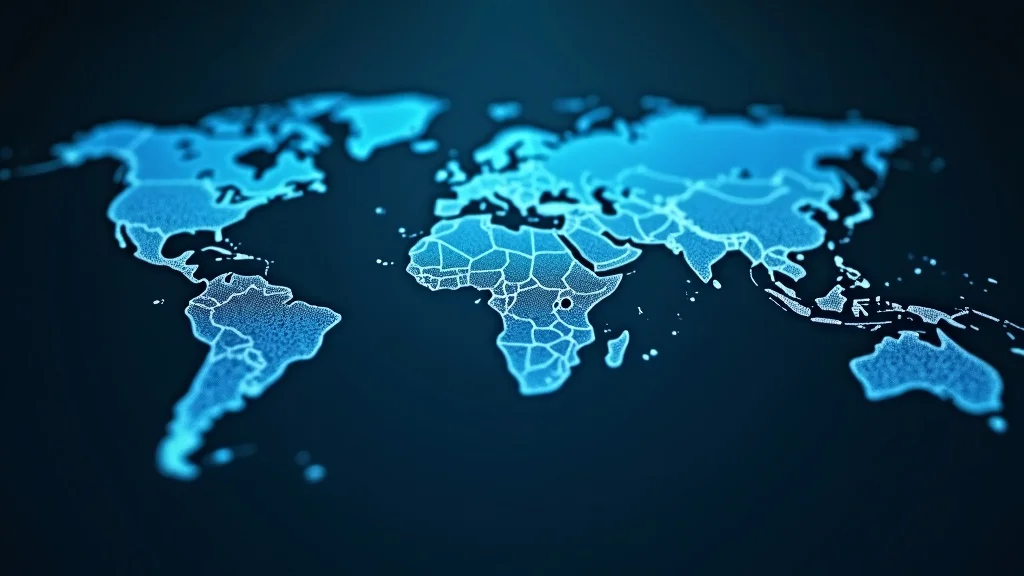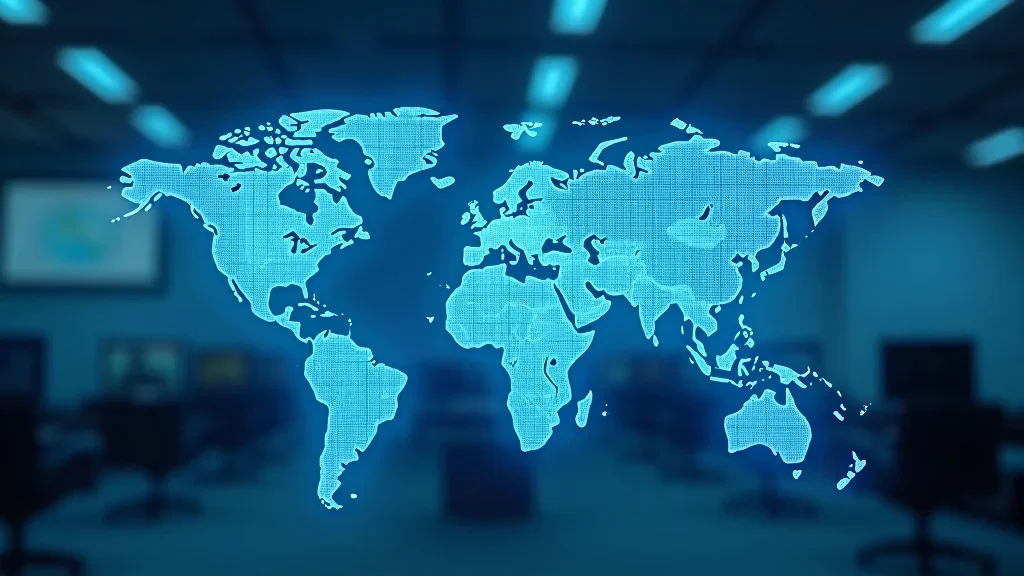Did you know? Despite AI's rapid advancement, no universal definition of Ethical AI exists today, making the ai ethics gap a crucial frontier in technology governance. This gap between global ideals and local experiences reveals not only challenges but also unprecedented opportunities to rethink how AI should serve humanity. In an era where the narrative around AI ethics is still being written, understanding and bridging this chasm is essential for anyone invested in the future of technology and society.

The Current AI Ethics Gap: Lack of Universal Definition and Global Consensus
The concept of ethical AI remains profoundly unsettled worldwide. There is a conspicuous absence of a universal definition or agreed-upon framework guiding AI governance. This vacuum leads to significant discrepancies between what ethical AI principles advocate and the reality many communities face. According to the Editorial Team of AI NEXUS AFRICA NEWS, "AI governance is being built in real time with no universal definition or shared moral compass, making the ethics gap both a challenge and an opportunity."
This ai ethics gap manifests as uneven application and understanding of responsible AI, diverging widely across regions and cultures. What one country or institution prioritizes as ethical might be less relevant or even detrimental elsewhere due to distinct social, economic, and cultural contexts. Consequently, despite laudable global frameworks, communities, especially those in rural and climate-vulnerable areas—often experience AI’s impact in ways unaccounted for in policy or design.
Bridging this divide requires a profound appreciation for local realities and a willingness to redefine responsible AI beyond abstract ideals. It demands that technological development be paired with inclusive dialogue reflecting lived experiences and ethical pragmatism. Ultimately, the power lies with those who shape the ethics narrative, as they determine AI’s future trajectory globally.
As we consider how ethical frameworks must adapt to local contexts, it's also valuable to examine how emerging technologies themselves are reshaping our understanding of reality and responsibility. For a deeper dive into the transformative potential of future technologies and their societal implications, explore how future technologies could rewrite reality for us and what this means for ethical governance.
Understanding the Meaningfulness Gap in Responsible AI
How the Meaningfulness Gap Impacts AI Ethics and Responsible AI
An equally troubling dimension of the ai ethics gap is the "meaningfulness gap," which highlights the disconnect between ethical principles designed in technocratic centers and the meaningful lived realities of affected populations. AI systems often operate under assumptions or values that do not align with local cultures, languages, and social practices, resulting in ethical frameworks that feel abstract or irrelevant on the ground.
This gap undermines the credibility and effectiveness of responsible AI initiatives. When communities perceive ethical AI merely as a compliance checkbox rather than a meaningful tool to improve quality of life, trust erodes and adoption falters. Furthermore, marginalized groups—such as rural communities or informal economies, are frequently excluded from shaping these frameworks, compounding ethical blind spots.
Navigating this meaningfulness gap demands a co-creative approach. AI systems must be developed in consultation with diverse stakeholders, incorporating not only technical expertise but intimate cultural knowledge. This approach ensures that AI ethics frameworks respect and reflect how people actually live, valuing context over abstraction to promote fairness and justice in AI deployment.
The Role of AI Systems in Bridging the Ethics Gap
AI systems themselves can act as bridges, if designed inclusively and transparently. By embedding ethical considerations into the architecture and operation of AI, developers can reduce harm and foster accountability. This requires tools and interfaces that are accessible, adaptable, and responsive to local languages and customs.
For example, designing AI for multilingual environments or climate-vulnerable regions means understanding local priorities and constraints. Systems that integrate local data sources and decision-making criteria can better serve those communities, reducing the space where the ethics gap widens. The Editorial Team at AI NEXUS AFRICA NEWS emphasizes that technology "must not only be engineered, but imagined and shaped through community care and context-sensitive ethics."

The Ethics Gap: From Global Frameworks to Local Realities
Challenges in Applying AI Ethics Across Diverse Communities and Cultures
Applying standardized ethical principles across diverse cultural and socioeconomic landscapes is an immense challenge. The ai ethics gap grows even wider when global frameworks fail to encapsulate the nuances of different communities. For instance, privacy standards deemed critical in one culture may conflict with communal data-sharing norms in another.
Moreover, the impact of AI on vulnerable populations, such as climate-affected regions or informal labor markets, is often overlooked during policy formulation. This creates an accountability void where ethical AI principles exist on paper but do not translate into tangible protections or benefits at the grassroots level.
Ethical AI must reckon with these local realities by adapting frameworks into culturally relevant implementations. It also requires investing in education and capacity-building so local stakeholders can actively participate in AI governance and demand accountability.

The Responsibility Gap: Who is Accountable in AI Development?
Underlying the ethics gap is a critical question of responsibility. As AI systems permeate everyday life, accountability for their consequences becomes blurred. The Editorial Team of AI NEXUS AFRICA NEWS stresses: "The question is no longer who controls AI, but who controls the meaning of ethics, which ultimately shapes the future of AI governance."
This responsibility gap can obscure who should be held liable when AI decisions lead to harm or inequity—developers, policymakers, or users? Closing this gap means creating clear mechanisms of accountability that are transparent and equitable, especially for marginalized populations.
Ultimately, it is a shared duty among all AI stakeholders to ensure that ethical principles guide technology from conception to real-world impact. Only through collective responsibility can the ethics gap begin to close.
Opportunities for Inclusive Ethical AI Models
Africa’s Role in Shaping Contextual and Community-Centered AI Ethics
Africa stands uniquely positioned to influence the emerging narrative around ethical AI. The region’s diverse cultures, collective knowledge systems, and experience with technology adoption offer fertile ground for pioneering inclusive and contextual AI ethics models. Instead of merely adapting global frameworks, Africa can lead new paradigms rooted in community, care, and lived realities.
This approach challenges existing power structures of AI governance dominated by global capitals. It opens space for African voices historically excluded from tech policy arenas to contribute meaningfully to how AI should be governed. Such contributions enrich the global dialogue, promoting more equitable and culturally sensitive AI development worldwide.
Co-Creating AI Ethics: Tools, Languages, and Values Reflecting Real Lives
Co-creation is the cornerstone of narrowing the ethics gap. By engaging practitioners, researchers, and policymakers alongside local communities, Africa can develop AI ethics languages and tools that resonate authentically with diverse experiences. Multilingual frameworks, culturally attuned guidelines, and participatory governance mechanisms emerge through such collaboration.
These efforts transform ethical AI from theoretical principles into practical, actionable standards that empower local populations. The Editorial Team of AI NEXUS AFRICA NEWS highlights the potential for these inclusive models to "reflect how people actually live, not just how AI is engineered," turning ethics into a dynamic, living conversation.

Key Principles of AI Ethics to Bridge the Gap

Principle |
Description |
Example |
|---|---|---|
Transparency |
Ensuring AI systems operate openly with explainable processes. |
Clear user interfaces detailing how AI makes decisions. |
Fairness |
Preventing discrimination and bias in AI algorithms. |
Auditing datasets for representation across communities. |
Accountability |
Establishing responsibility for AI impacts and failures. |
Mechanisms for users to report AI harms and seek redress. |
Privacy |
Protecting personal data throughout AI operation. |
Data anonymization and consent protocols. |
Safety |
Ensuring AI systems do not cause harm to users or society. |
Continuous monitoring to detect and mitigate risks. |
Common Ethical Issues and Responsibility Gaps in AI
Bias and discrimination in AI algorithms
Lack of transparency in AI decision-making
Accountability gaps in AI system failures
Privacy concerns with data usage
Impact on vulnerable and marginalized communities
Actionable Tips for Closing the AI Ethics Gap
Engaging Local Communities in AI Governance
Inclusive governance demands that local communities participate actively in AI development and regulation. Empowering citizens through education and engagement platforms fosters trust and ensures that ethical AI frameworks consider on-the-ground realities. Examples include community workshops, co-design sessions, and advisory councils that integrate diverse voices.

Promoting Multilingual and Multicultural AI Ethics Frameworks
AI governance frameworks must acknowledge linguistic and cultural diversity to be truly ethical. This involves translating guidelines into local languages, adapting norms to cultural contexts, and fostering cross-cultural dialogue. Multilingual ethics frameworks enhance accessibility and relevant application, bridging communication gaps that often exacerbate ethical misunderstandings.
Encouraging Cross-Disciplinary Collaboration Among Practitioners and Policymakers
Bridging the ai ethics gap requires collaboration beyond technical experts alone. Engaging ethicists, sociologists, legal scholars, and policymakers ensures AI ethics integrates broad societal perspectives. Such interdisciplinary approaches help anticipate impacts, design better accountability mechanisms, and create more balanced, inclusive governance structures.
People Also Ask: Addressing Common Questions on AI Ethics and Responsibility
What are the biggest ethical issues with AI?
The primary ethical issues include algorithmic bias, lack of transparency, privacy violations, accountability ambiguity, and AI’s disproportionate impact on vulnerable groups.
What are the four responsibility gaps with artificial intelligence?
They include gaps in accountability, liability, moral responsibility, and governance that arise from AI's autonomous or opaque decision-making processes.
What are the 5 key principles of AI ethics?
The key principles are Transparency, Fairness, Accountability, Privacy, and Safety — each essential to ensuring AI is developed and deployed responsibly.
What is the accountability gap in AI?
It refers to the difficulty in pinpointing who is responsible for harms or failures caused by AI systems, which complicates redress and governance.
Key Takeaways: Summarizing the AI Ethics Gap and Path Forward
Editorial Team of AI NEXUS AFRICA NEWS concludes, "Ethical AI is not a fixed destination but a conversation and negotiation that requires courage and inclusivity to shape a just future."
Conclusion: Shaping the Future by Bridging the AI Ethics Gap
The Importance of Defining Ethics Locally and Globally
Ethics must be a shared, evolving dialogue rooted in both global values and local realities. This dynamic balance is essential to build responsible AI that truly serves humanity.
As you reflect on the journey to bridge the AI ethics gap, consider how the technologies of tomorrow will further challenge and expand our ethical frameworks. The intersection of innovation and responsibility is constantly evolving, and staying informed is key to shaping a future where technology uplifts every community. For a broader perspective on how emerging technologies are poised to transform our world and the ethical questions they raise, discover the insights in future technologies that could rewrite reality. Let this be your next step in exploring the dynamic relationship between technology, ethics, and society.
Call to Action: Discover The AI Africa News Channel
Visit https://aiafricanews.com to stay informed on AI ethics developments
Engage with diverse perspectives shaping AI governance
Support inclusive and responsible AI initiatives worldwide
Sources:
To deepen your understanding of the AI ethics gap and its implications, consider exploring the following resources:
“The ‘Ethics Gap’: 75% of Mediators Using AI Without Training as Professional Standards Lag Behind Technology” (mediate.com). This article highlights the widespread use of AI tools among legal professionals without adequate ethical training, underscoring the urgent need for comprehensive education to maintain professional integrity.
“AI, Ethics, and the Accountability Gap” (actuateglobal.com). This piece discusses the challenges in assigning responsibility for AI decisions, emphasizing the necessity for clear governance frameworks to ensure ethical AI deployment.
Engaging with these resources will provide valuable insights into the complexities of aligning AI principles with local realities and the importance of bridging the existing ethics gap.
 Add Row
Add Row  Add
Add 




Write A Comment